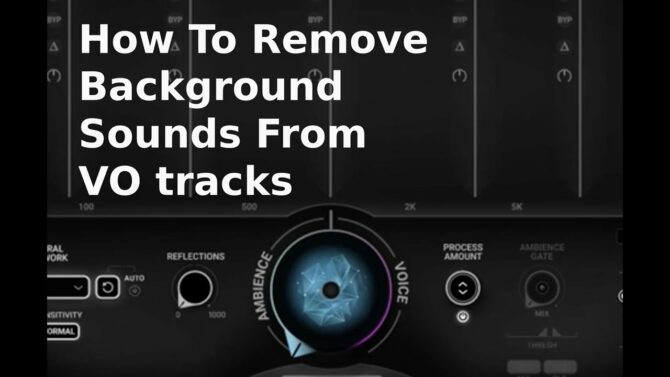Can something this small and light deliver the sound you need for small venues?
“Personal” PAs are a hot topic because of several important attributes: they’re portable, flexible, and powerful enough to fill small venues. Mackie’s latest, the SRM-Flex, is an impressive piece of gear Definition:
Definition:
Musical or performance equipment. that takes another evolutionary step forward—and typically costs under $1,000. Let’s look at each of the above attributes, and see how the SRM-Flex stacks up.
Portable. The whole system weighs under 30 pounds (Fig. 1). Yup. It just takes one trip from your car to the venue to get your sound system up and running. The base unit has a handle, while the three columns fit in an over-the-shoulder, non-annoying carry bag.

Flexible. The mixer Definition:
Definition:
Combiner, controller, and router for multiple audio or video signals. has six channels. This doesn’t mean you should put a six-piece band Definition:
Definition:
A grouped range of frequencies, usually with a commonly used designation. through it; personal PAs are still optimized for solos and duos, but the more expansive mixer offers more options. There are two mic/line/instrument inputs, stereo Definition:
Definition:
A two channel signal simulating a sound space, typically played through two speakers. line inputs that work well with a keyboard (not all personal PAs acquit themselves well with keyboards), and stereo Bluetooth Definition:
Definition:
A short distance (less than 33 feet) wireless data transfer standard. for streaming Definition:
Definition:
A method of sending a continuous flow of digital content over IP (Internet Protocol) networks, and often, tailors itself to the user's receiving capability. or 1/8″ aux input (Fig. 2).

So for example, if you have an arranger keyboard-based act, the keyboard goes into the line ins, there’s another input if you double on guitar, a mic input for vocals, and Bluetooth to stream break music from your smartphone. A singer/songwriter can use a mic in, acoustic guitar in, and dedicate the line in for an electric guitar pedalboard…you get the idea. An XLR Mix Out jack Definition:
Definition:
A connector, normally female, that works in conjunction wit a plug. Usually located in a piece of equipment, or as part of a cable. can feed another unit, a supplementary PA Definition:
Definition:
(Public Address) A sound system intended to provide audio coverage to large groups of people. system, or a recording setup for capturing your live act.
The two main inputs (with combi input jacks) have high and low tone controls, volume, and reverb Definition:
Definition:
Short for Reverberation. The myriad echoes of decaying amplitude created in an acoustic environment. Reverberation may be simulated electronically, mechanically using springs or a metal plate, or in a specially built physical chamber with reflective surfaces where a speaker sends audio into the chamber, and a microphone picks up the reflections. send (three basic reverb variations, or off). The other two input pairs each have their own volume control, and there’s an overall master volume. Note that all the controls are rotary encoders, so there’s no calibration line on the knobs. However, as soon as you turn a knob, the (bright Definition:
Definition:
In audio, a sound quality that emphasizes high frequencies. Also called "crisp," "clear," or "sparkly." green) bar graph meter shows the knob setting. For the tone controls, on-power up the controls are centered, so the meter either goes left or right from center when you start adjusting the control.
A three-position EQ switch chooses among curves for Music, Speech, or Live. The Speech option lets SRM-Flex make the transition to stand-up comics, workshops/seminars, sermons, and corporate presentations. Music applies the “smile” EQ curve (more bass and highs), while Live is flat Definition:
Definition:
1. A frequency response curve that looks like a flat line because the response is even throughout the audio spectrum. 2. A scenic element like a wall or door. 3. A musical note that is lower in pitch than the note's standard frequency. See also: Sharp. response. However, these are suggestions, not rules. Don’t overlook using the Music EQ setting for live performance; most of the time the Live setting will be more faithful to your sound, but the Music setting can sometimes dress up the tone a bit. It can also give mics more of a “late-night FM Definition:
Definition:
FM (Frequency Modulation): A method of transmitting audio with minimal noise. The waveform being modulated is called the carrier and the modulating waveform, the modulator. radio announcer” sound.
As is customary with many Mackie products, there’s an iOS Definition:
Definition:
Apple proprietary operating system, primarily for mobile devices (iPhone, iPad, iPod Touch, Apple Watch). Current Apple TVs run on tvOS, which is similar to, and based on, iOS. (11 or higher) and Android (6 or higher) app for remote Definition:
Definition:
A broadcast from the field, not from the studio. A Remote Control. control that connects via Bluetooth. I find the best use for these kinds of apps is when a person who knows something about sound can walk around the room while you’re going through sound check, and make any tweaks to EQ and levels. The second best use is to play some pre-recorded material of you playing through the system, and tweak Definition:
Definition:
1. To make minor adjustments. 2. A person who is a perfectionist. the sound yourself as you appraise the venue.
Although you can pretty much control everything you need without the app, it does access other functionality. You can see precise settings for the faders and controls, uses mute Definition:
Definition:
1. To silence or squelch an audio signal. 2. A switch that silences a signal. buttons for the channels and main out, save mixer snapshots, choose the LED Definition:
Definition:
LED (Light-Emitting Diode): A semiconductor light generator used in displays, television, pointers and for general illumination. It is a low-power replacement for incandescent lamps. bar mode, select auto-connect for Bluetooth, and more.
Powerful. The power spec is 1,300 Watts, although we all know (or at least, should know!) that power specs are meaningless for making comparisons, because different manufacturers measure wattage differently. But the important point is you don’t hear watts, you hear level…so the question is whether a portable PA, regardless of the wattage spec, gets loud enough to fill your intended venue, with no audible distortion Definition:
Definition:
A change in an electronic or acoustic signal's waveform. This can undesirable if it impacts signal quality, or desirable when used for creative signal processing..
Given the size and weight, you might not expect much—but the SRM-Flex beat my expectations. The 10″ subwoofer Definition:
Definition:
A low-frequency speaker, typically optimized for response below 120 Hz, for augmenting full-range sound systems. handles the low end well (if you need more low end, use the old trick of setting up the SRM-Flex in a room’s corner, or with its back to the wall). Six, 2″ high-frequency Definition:
Definition:
A value, expressed in Hertz, that indicates how many cycles of a periodic signal occur in one second. drivers are designed for wide sound dispersion, but the really clever aspect is including a height extender to raise the high-frequency drivers. If people are standing, extend the height with two extensions; if they’re sitting, use one extension. If you’re addressing a bunch of kids sitting on the floor, don’t use any extension. This is a simple approach, but it’s an effective solution to make sure the high frequencies reach Definition:
Definition:
The size of a broadcast or media market. your audience.
The SRM-Flex has quite a bit of protection, like built-in limiting, thermal shutdown in case of overheating, and subsonic Definition:
Definition:
Sounds or signals with frequencies below the range of human hearing. filtering. This doesn’t mean you can’t abuse the system if you try hard enough, but the distortion would abuse your audience before you reached the stage of overdriving the SRM-Flex itself.
Conclusions
There are several competitors in this price range; however the feature sets are somewhat different. As always, evaluate your needs and look for the best match. But getting back to the SRM-Flex, it’s easy to operate, has a solid build quality, does what it says it does, performs well, and offers some useful bonus features. I agree with Mackie that it can handle venues with up to 100 people or so, but more importantly, in my opinion, the sound quality keeps ear fatigue Definition:
Definition:
A negative effect of long-term listening that includes loss of hearing sensitivity; often caused by excessive monitoring levels. at bay. The clean sound holds up over the course of a gig.
Although there’s no shortage of personal PA options, the SRM-Flex hits a very sweet spot of price and performance. If you look around enough you may be able to find something that suits a specific set of needs better, but I recommend not making any final buying decision before hearing (and seeing) for yourself what the SRM-Flex can do.











